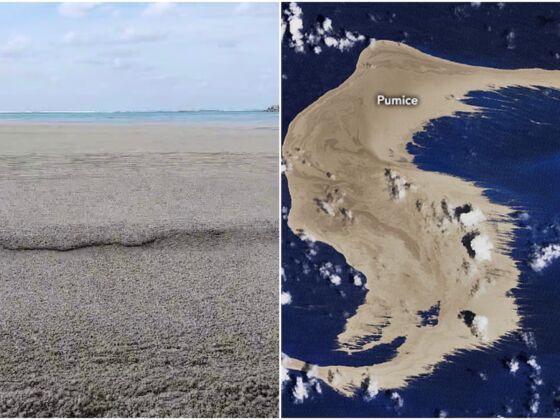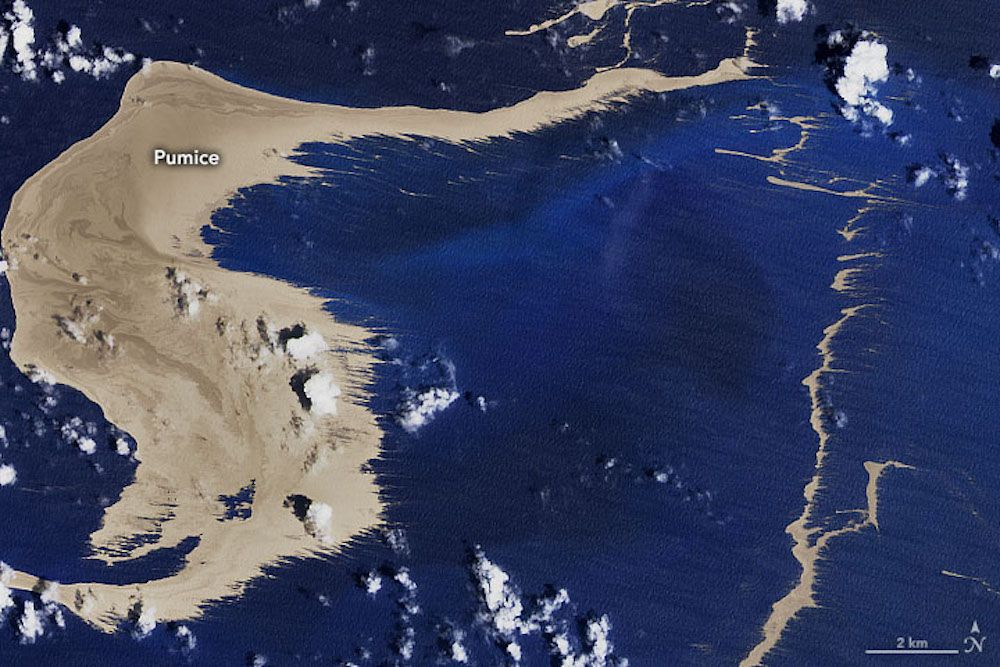Months after an undersea volcano erupted on August 12, 2021, huge amounts of pumice have appeared around Japan’s southernmost coastlines.
The active Fukutoku-okanoba submarine volcano is located about 80 feet under the surface of the Pacific Ocean and 621 miles south of Tokyo. One of NASA’s satellites captured an image of the unusually large huge plume of gas and steam that extended 11 miles up into the air. Several Philippines Airlines flights were cancelled to keep ash from damaging the aircrafts’ jet engines. It was an impressive feat of nature and a little disruptive.

